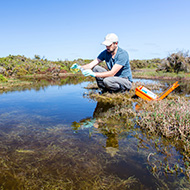Risk of bluetongue spreading to Ireland has increased, minister says
“Early detection of any outbreak in Ireland will be crucial to help us prevent onward spread” – Charlie McConalogue.
The Republic of Ireland’s minister for agriculture, food and the marine has warned that the risk of bluetongue reaching the country has increased due to the spread of the virus in England and Wales.
More than 100 cases of bluetongue virus serotype 3 (BTV-3) have now been confirmed in England. The regions where the virus is circulating have been placed under livestock movement restrictions.
However, some cases have been detected outside the zone in animals moved before restrictions were put in place, including in Wales.
The minister, Charlie McConalogue, has reminded farmers to report any suspected cases straight away.
Minister McConalogue said: “It is clear that the risk of spread to Ireland has increased as the disease comes closer to our shores.
“Early detection of any outbreak in Ireland will be crucial to help us prevent onward spread. For that reason, I ask all farmers to report any suspect cases of bluetongue promptly.
“If we can detect and respond to an incursion at an early stage, we have a better chance of stopping its spread and protecting cattle and sheep across the country.”
The BTV-3 strain has also spread across mainland Europe, affecting countries including France, Belgium, the Netherlands, Germany, and Denmark.
Minister McConalogue added: “My department is continuing to carry out a range of surveillance and risk-reducing activities, including increased active surveillance of higher risk animals, targeted surveillance, and awareness campaigns.
“I want to remind anyone involved in trading in and transport of livestock to and from affected areas and countries, to support these actions and work closely with their local Regional Veterinary Office.”
Image © Shutterstock



 A set of international guidelines for disease surveillance in wildlife has been updated for the first time since 2015.
A set of international guidelines for disease surveillance in wildlife has been updated for the first time since 2015.